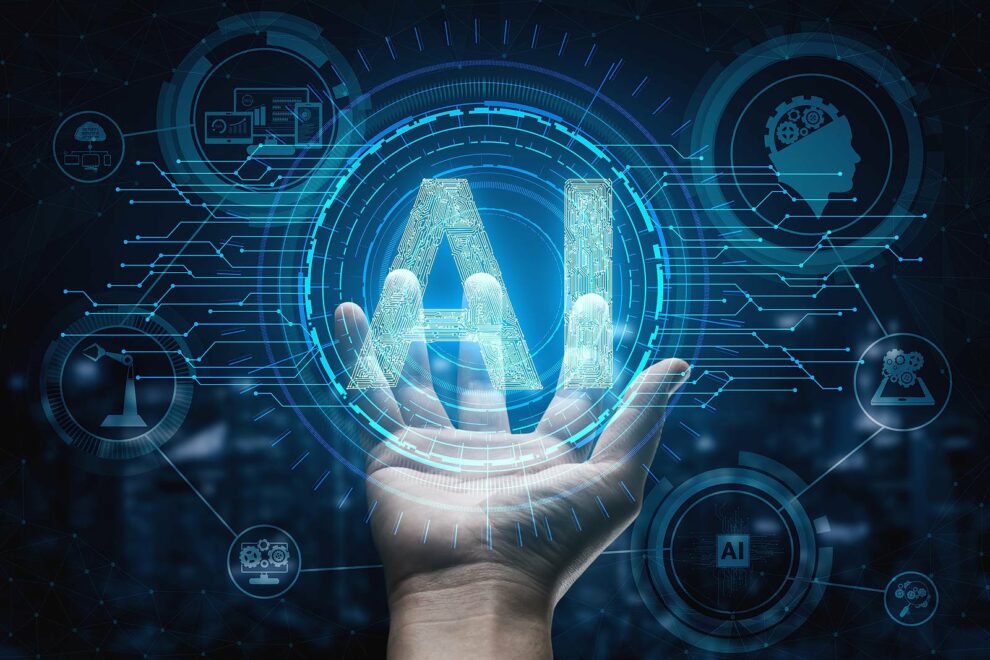This guide will mainly focus on introducing the world of Artificial Intelligence (AI) to the folks. We will learn how AI works and what future AI holds for us. So, let us now dive into the AI world.
People worldwide are aware of the development and inclusion of AI in different aspects of life. When you see robots and self-help machines, you instantly know it involves AI. Whatever non-human things do, work and activities on their own are possible due to Machine Learning (ML).
If you input a complex problem to an AI-infused technology, its algorithm can generate the most accurate result. Machine Learning is a simulation of how humans do even the menial activities in daily life. With the speed with which AI is evolving, it is safe to say that it will significantly impact our lives in the future.
Artificial Intelligence (AI)
AI is anything a computer does that would otherwise require a human touch. AI or Machine Learning is the technology that mimics human intelligence to the core of fulfilling every task in command.
All of us make use of AI technology in daily life. It is already deep-rooted and prevalent in different aspects and courses of life and industry in the market. Common ways where we interact with AI include:
- Smart speakers or voice searches on mobile devices like smartphones.
- Online messengers use chat bots for efficient and prompt 24/7 customer assistance.
- Automation of email marketing approach used by marketers to promote their business or enhance the business website.
- Google uses AI to determine the top-ranking results on the SERPs based on the criteria set.
- Online ads use AI to track the customers’ behaviour and interest by analysing their online activities and recent searches.
These ordinary and insignificant things in our life have prevalent AI usage. In layman’s words, AI can think and act rationally just like a human. They can perform a task without any explicit command to do so.
The capability of performance of an AI to that of human-likeness is ascertained via different tests conducted by the AI researcher. These AI tests confirm if the AI model is booming and will behave the same way in the near future.
These AI tests are unlike any other test and are, namely,
- Turing Test
- The Rational Agent Approach
- The Cognitive Modelling Approach
- The Law of Thought Approach.
Unfortunately, learning about these tests is another vast topic. For now, let’s proceed and see how AI works.
How does AI work?
To understand how AI works deeply, you would have to learn about other sub-domains relating to AI. An AI technology is built through the reverse-engineering process that simulates human traits and capabilities into the machine.
If you are interested in taking up a career in artificial intelligence, you can now find many updated and trending artificial intelligence courses. You can get these AI courses both online and offline. You would only need a working laptop or computer and a basic understanding of the technological terms.
Now, every AI course will have something on the following sub-domains of AI.
- Machine Learning (ML) – Without accurate ML infusion, an AI machine cannot make proper analysis and interferences of the users’ past activities. The ML is responsible for identifying the patterns and analysing of data that the machine collects. ML helps reach a viable conclusion closest to human reasonings. There is something called a machine learning course for beginners if you are interested.
- Cognitive Computing – AI is a technological stimulus of human activities. And Cognitive Computing algorithms are responsible for making the machine precisely mimic the human brain.
- Computer Vision – A human eye cannot be compared to any camera. AI uses the Computer Vision algorithm to identify an image by breaking it down to its tiniest parts. That helps the machine classify the image into different categories and create a better output.
- Neural Networks – Neural Networks of an AI are similar to how a human’s neural cells. It is a series of algorithms that works like a human brain to understand the relationship between variables and data processing.
- Natural Language Processing (NLP) – AI uses NLP to read, understand, and interpret the machine language. It helps the machine analyze what the user is trying to communicate to relay the proper response.
You can easily find different artificial intelligence courses in these total domains.
Types of Artificial Intelligence
While AI uses similar aspects of human likeness, different AI entities are for other purposes. AI is classified into two types – Type 1 and Type 2.
The first four types of AI are namely,
- Reactive Machines
- Limited Memory
- Theory of Mind
- Self Aware
Reactive Machines are the most basic level of AI that performs the basic operations. When you input something into the machine, it will simply work to give the necessary output. This AI type uses no learning aspects as it does not store any input data.
Limited Memory involves data storage and later using them to make better predictions. ML for AI becomes a bit more complex with Limited Memory. Common ML models with a Limited Memory type are; Reinforcement Learning, Long Short Term Memory (LSTMs), and Evolutionary Generative Adversarial Networks (E-GAN).
Theory of Mind is yet a subject of discussion among the AI types. It is yet to be put to use. This type of AI will supposedly interact with emotions and thoughts like that of humans. With the current ML models, AI only works in a one-way relationship.
Self Aware is a distant future of AIs. If AI achieves the level of self-awareness like humans, the whole environment will change drastically. In such a scenario, humans would have to negotiate with the AI-independent entity. That is the reason why this AI type only exists in theory.
The other three types of AI are based on tech orientation.
- Artificial Narrow Intelligence
- Artificial General Intelligence
- Artificial Super Intelligence
Artificial Narrow Intelligence (ANI) is stage 1 of Machine Learning, specialising only in one area and one problem to solve. They follow a particular context and have limited parameters to perform.
Artificial General Intelligence (AGI) is stage 2 of Machine Intelligence. Here, AI possesses the same level of cognitive function as humans. It comprises broad domains like image processing, computational functioning, language processing, reasoning, etc.
Artificial Super Intelligence (ASI) is stage 3 of Machine Consciousness. It is AI technology that surpasses the standard human capabilities. That would include rational decision-making, creating better art, or building emotional relationships. But, this AI type cannot be perfected yet as good or bad.
Wrap up
To conclude, AI is needed in different aspects of life and industries to make processes more efficient and accurate. They have some crucial needs in marketing and statistics to solve problems. While there are multiple speculations of AI as a problematic concept, it has outnumbered benefits and applications.



















Add Comment